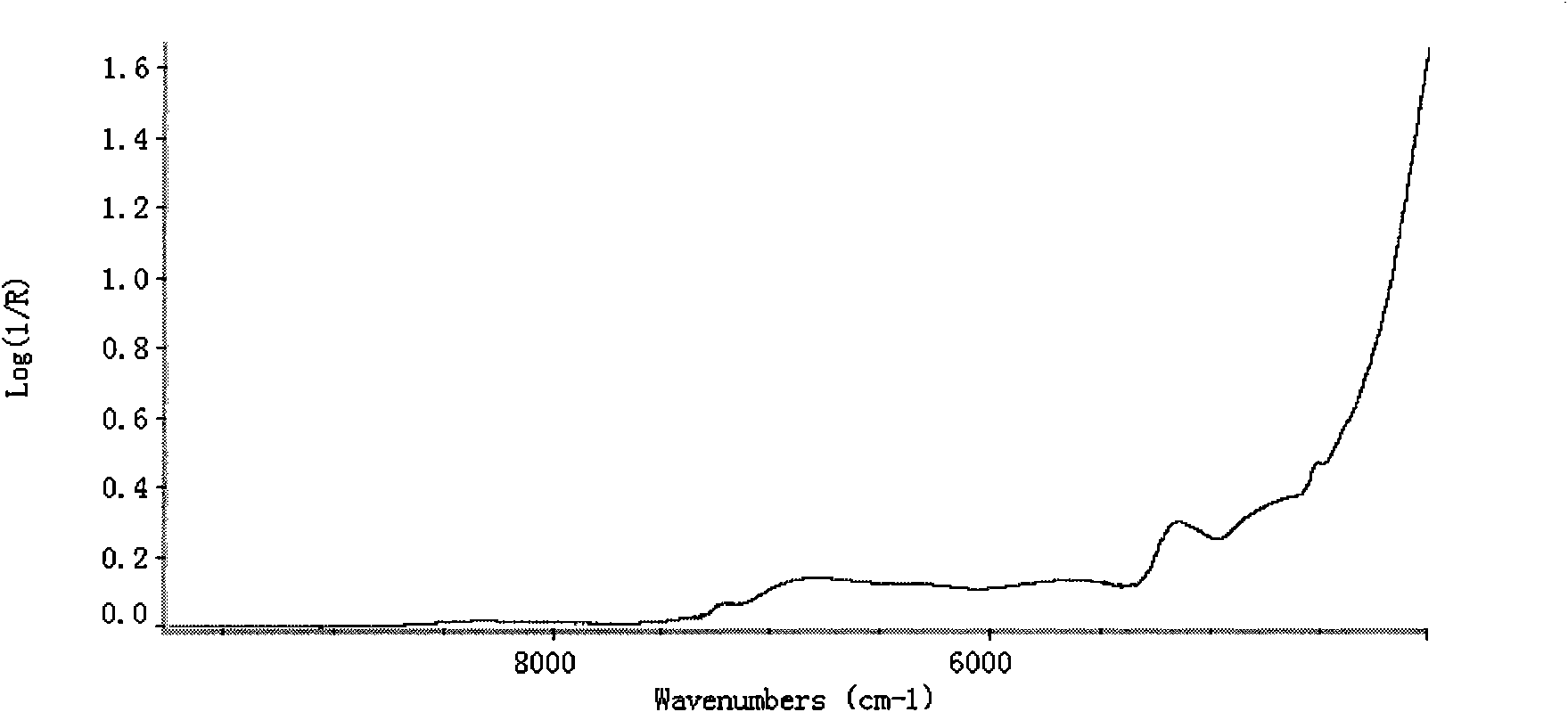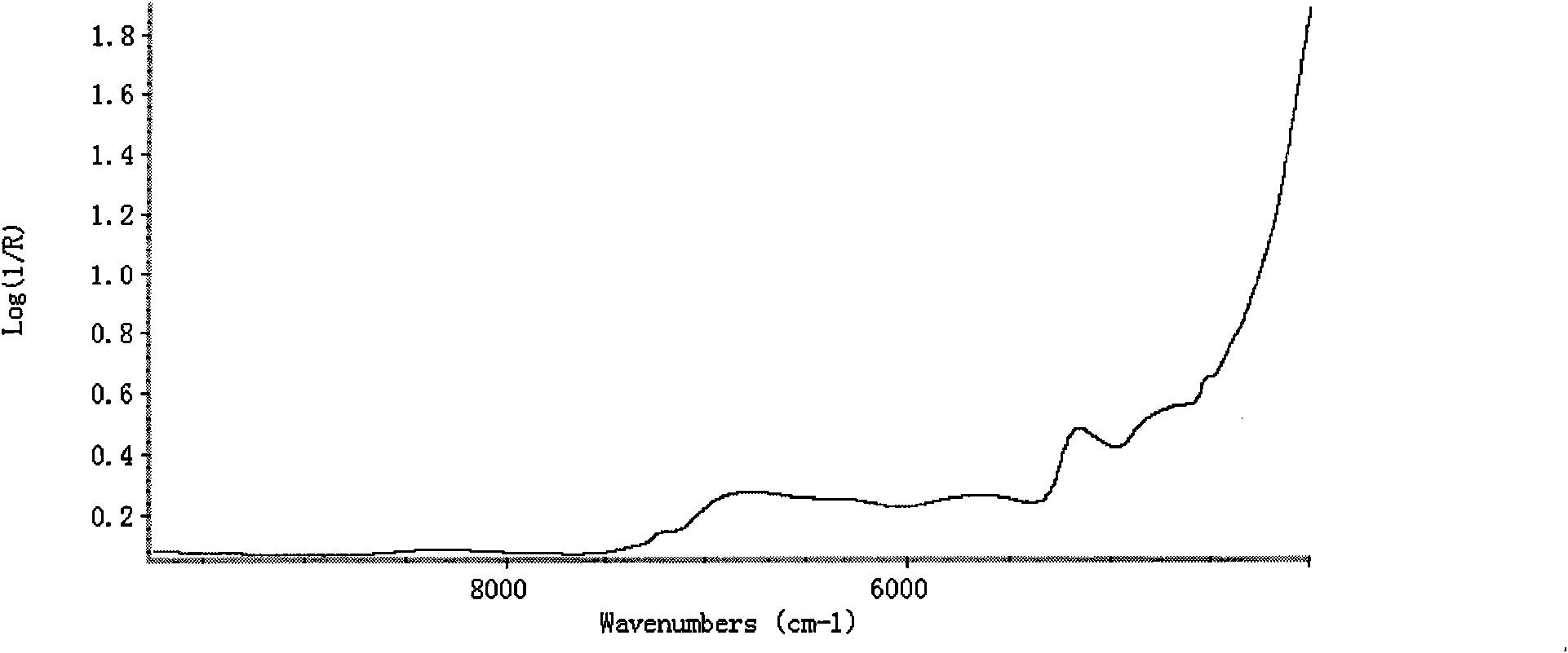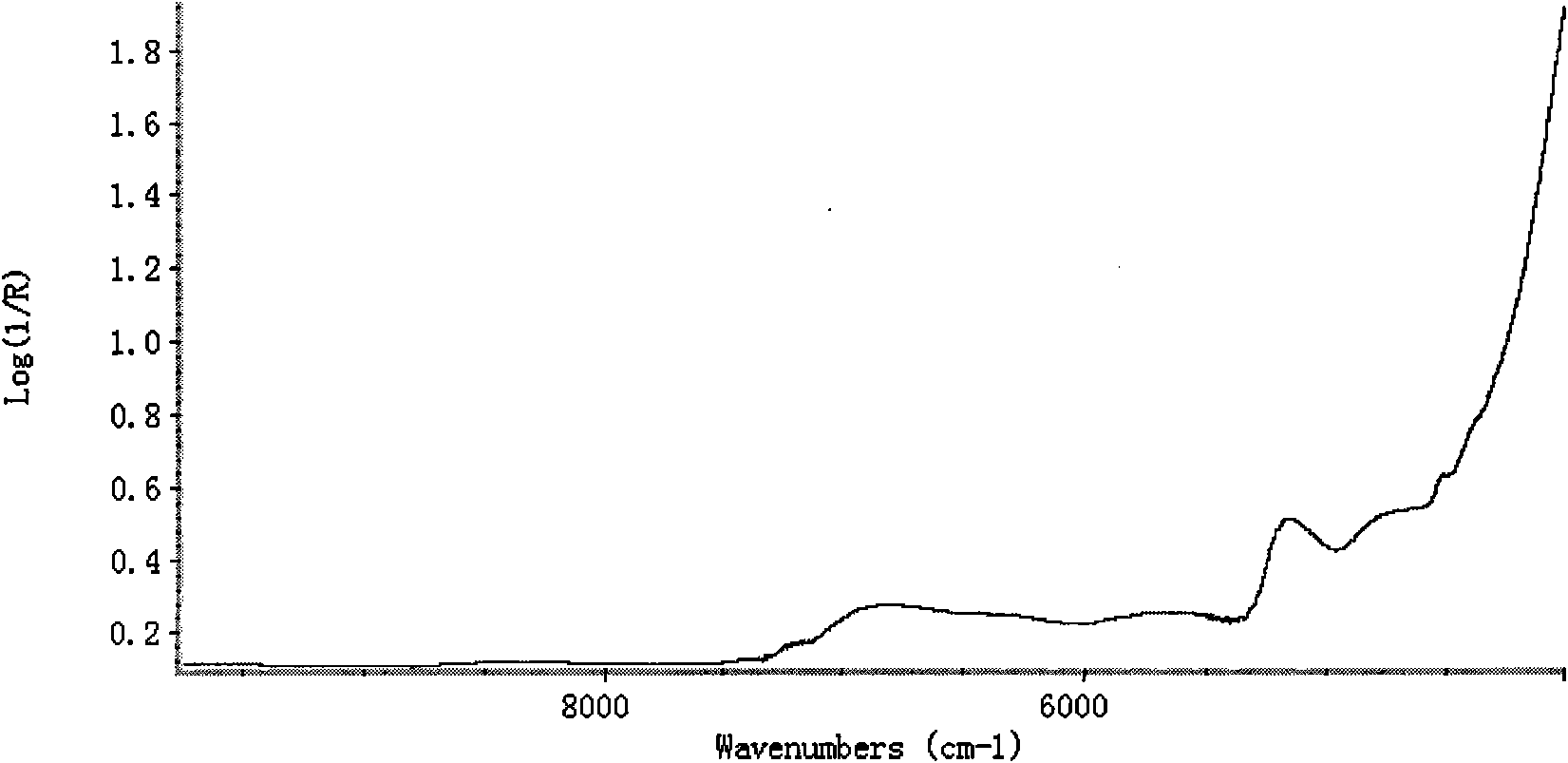Near infrared spectrum identification method for red sage roots
A near-infrared spectroscopy, Salvia miltiorrhiza technology, applied in the field of traditional Chinese medicine research, can solve the problems of complicated operation, long time consumption, environmental pollution, etc., and achieve the effects of accurate results, simple operation, and pollution-free results.
- Summary
- Abstract
- Description
- Claims
- Application Information
AI Technical Summary
Problems solved by technology
Method used
Image
Examples
Embodiment 1
[0038] In this example, through the near-infrared spectra of 289 batches of authentic Danshen and its common counterfeit products, including Dipsacus, Burdock root and Ganxi rat tail, combined with chemometrics, a new identification model of Danshen was established. After verification, The discrimination effect of the model is good.
[0039] 1. Instruments and materials
[0040] 1.1 Instrument
[0041] Antaris Fourier transform near-infrared spectrometer (Thermo Fisher, USA), SabIR diffuse reflection fiber optic probe accessories. Software: Result software (Thermo Fisher, USA) is used for spectrum acquisition, and TQ Analyst6.2 software (Thermo Fisher, USA) is used for spectral preprocessing and algorithm calculation.
[0042] 1.2 Sample source
[0043] The experimental samples included Danshen medicinal materials from different origins in Shaanxi and other common counterfeit Danshen products such as Dipsacus, Burdock root and Ganxi sage tail. The sources of samples are sho...
Embodiment 2
[0062] In this example, the same instruments and methods as in Example 1 were used to establish a model and verify the identification rate of the model. The composition of the samples is also shown in Table 1. The difference between this embodiment and embodiment 1 is only:
[0063] 1. When collecting spectra in this embodiment, the raw medicinal materials were divided into 50 parts on average, 10 grams of each part were uniformly mixed, dried at 65°C for 8 hours, pulverized, and passed through a 60-mesh standard drug sieve. Then uniformly put them into 50ml standard sampling bottles, pad them tightly, and set them aside.
[0064] 2. In this embodiment, 25 is used as the principal component number to establish the identification model.
[0065] The obtained model was validated with the validation set and found that the discriminative rate of the model was 100%.
Embodiment 3
[0067] This embodiment uses the same instrument and modeling method as in Embodiment 1, the only difference lies in the composition of the sample. The authentic Danshen in the calibration set of this embodiment includes samples No. 1-50, No. 61-110, and No. 121-170, excluding Hebei Danshen with sample numbers 181-205; counterfeit Danshen includes Nos. 211-230, 236 -No. 258, No. 264-284 samples are the same as in Example 1. The authentic Danshen in the verification set includes Nos. 51-60, 111-120, 171-180, and 181-210, including all samples of Hebei Danshen; the counterfeit Danshen includes Nos. 231-235, 259-263, and 285-289 No. sample, same as Example 1.
[0068] The identification results of the model obtained in this embodiment are shown in Table 3. After calculation, the identification rate of the model is 96%.
[0069] Table 3. Embodiment 3 identification results
[0070]
[0071]
PUM
 Login to View More
Login to View More Abstract
Description
Claims
Application Information
 Login to View More
Login to View More - R&D
- Intellectual Property
- Life Sciences
- Materials
- Tech Scout
- Unparalleled Data Quality
- Higher Quality Content
- 60% Fewer Hallucinations
Browse by: Latest US Patents, China's latest patents, Technical Efficacy Thesaurus, Application Domain, Technology Topic, Popular Technical Reports.
© 2025 PatSnap. All rights reserved.Legal|Privacy policy|Modern Slavery Act Transparency Statement|Sitemap|About US| Contact US: help@patsnap.com



